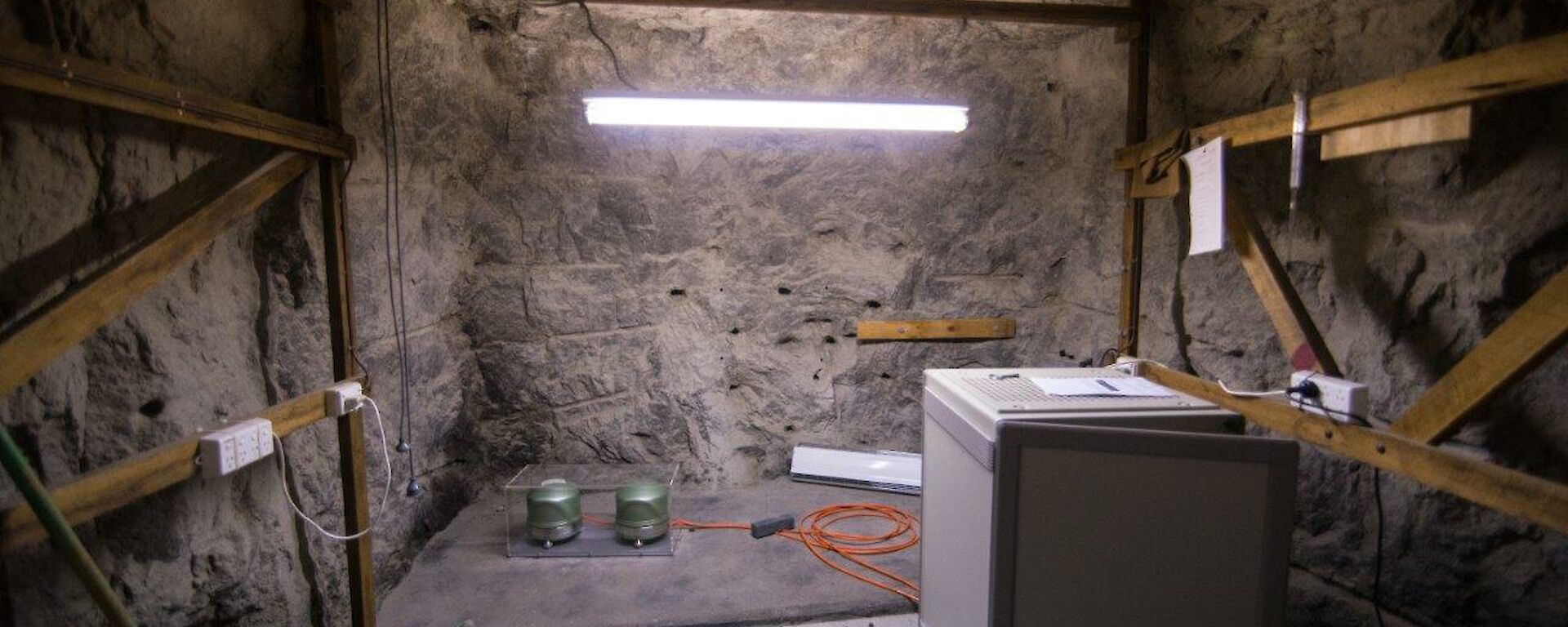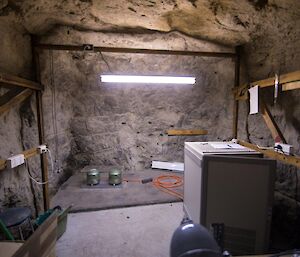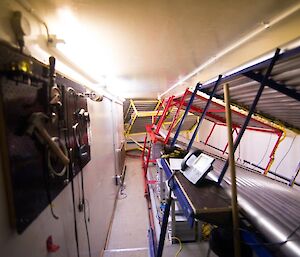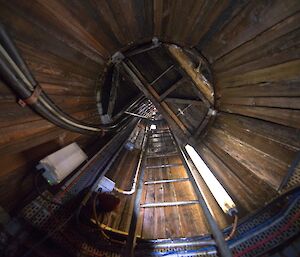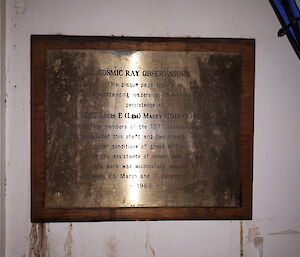Winter is coming! The temperature has dipped and we have ice forming again on Horseshoe Harbour and East Bay. We’ll see if it survives some coming winds…
Aside from regular duties this week, a need to ‘reset’ some Geoscience Australia remote monitoring equipment meant a trip was needed to the vault. This is an actual vault underneath the Cosray building that was built by some very tenacious folk deep down into the rock in 1971. The equipment in question was the seismic digitizer which generates the data from the seismometer and then sends it back to Geoscience Australia. A seismometer measures any motion of the ground, most usually caused by earthquakes or explosions.
This seismic monitoring station is also part of the Comprehensive Nuclear-Test-Ban Treaty International Monitoring System (IMS), designed to monitor for nuclear tests. Data are sent in real-time to Geoscience Australia and forwarded to the International Data Centre for use by the international community to detect any nuclear tests. This is one of seven nuclear monitoring stations in Australia and its Territories. Australia also operates four infrasound stations, a hydro-acoustic station, seven radionuclide monitoring stations and two radionuclide laboratory labs as part of the IMS. One of the infrasound stations is nearing completion at Davis and there is a radionuclide station at Macquarie Island.
However, as the building name suggests, there are other experiments housed here which have to do with ‘cosmic rays’ and these experiments have been running at Mawson in some form since 1955, becoming automated in 2008/9. The building houses an array of Muon telescopes and Neutron Monitors — large multiple horizontal tubes with detectors within. Run by the Australian Antarctic Division, both count the numbers of cosmic rays from space, but the Muon telescopes are also able to provide an indication of where these particles come from. There is a second Muon telescope in the vault so as to measure how far these particles can travel through the ground.
Since most things to do with astrophysics (well most physics really) makes my brain melt, this explanation comes from Wikipedia and previous Icy News:
Cosmic rays are high-energy radiation, mainly originating outside the Solar System and even from distant galaxies. Upon impact with the Earth’s atmosphere, cosmic rays can produce showers of secondary particles that sometimes reach the surface. Composed primarily of high-energy protons and atomic nuclei, they are of uncertain origin. Data from the Fermi Space Telescope (2013) have been interpreted as evidence that a significant fraction of primary cosmic rays originate from the supernova explosions of stars. Active galactic nuclei are also theorized to produce cosmic rays.
These high speed cosmic particles are charged, so they interact with the earth’s magnetic field, or any other magnetic field in space (i.e. from other stars and planets). This changes their direction so that once they eventually reach our telescopes it’s often difficult to tell exactly where they originated.
When first discovered, it was thought that all cosmic rays probably originate from our sun. But that was disproved early on, because the rate of cosmic rays detected at a certain point on earth is basically the same at night, as it is during the day. Or in our case in Antarctica, the amount of cosmic rays detected here is reasonably constant all year round.
A few interesting facts about cosmic rays to leave you with (and help you win next time it comes up at trivia night):
- Over 2 million cosmic rays fly through your body every day. It’s impossible to avoid them.
- We cannot possibly create a cosmic ray on earth.
- There is actually a cosmic ray particle called the ‘Oh-My-God particle’ discovered in 1991 in Utah and clearly a shock to the astrophysicists that discovered it, hence the name. Apparently the OMG factor is how high energy it is. For more info: https://en.wikipedia.org/wiki/Oh-My-God_particle
Esther/SL
PS: And yes, apparently the magic ‘control/alt/delete’ did the job…

